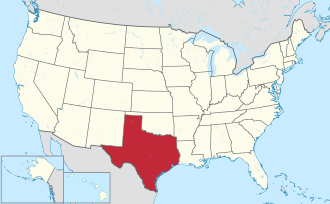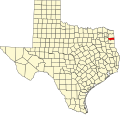County established
The legislature formed Marion County from Cass County in 1860 and named it for Revolutionary War Swamp Fox Francis Marion. [6] Jefferson, named after Thomas Jefferson became the county seat. [7]
The majority of the settlers had migrated from other southern states and brought enslaved African Americans with them as workers, or purchased them in slave markets. The county was developed as cotton plantations, and enslaved African Americans made up 51 percent of the population in 1860. In 1861, the white male voters in the county voted unanimously for secession from the Union. The county benefited financially from Confederate government contracts. [8]
In February 1869 the river steamboat Mittie Stephens caught fire from a torch basket that ignited a hay stack on board. Sixty-one people died, either from the fire or from being caught in the boat's paddlewheel as they jumped overboard. [9] [10]
Following the Civil War, the white minority used violence to impose dominance on the freedmen. On October 4, 1869, George Washington Smith, a delegate to the state Constitutional Convention, was murdered by a band of vigilantes while incarcerated in Jefferson. Smith's slaying resulted in the federal government assigning military troops to Jefferson. They offered some protection for the black majority during the Reconstruction era. [11]
During Reconstruction, Republican presidential races were supported by the black majority voters in the county. However, with the end of Reconstruction, white conservative Democrats regained control of the state legislature and, in 1898, passed various restrictions on voter registration and voting, including establishing White primaries. Because the Democratic Party dominated the state, its primaries afforded the only true competitive political races. Blacks were unable to vote in these primaries and were thus disenfranchised. Various forms of the white primary survived until 1944 when a US Supreme Court ruling overturned the practice as racially discriminatory and unconstitutional. [12] [13]
The Marion County brick courthouse was erected in 1914, designed by architect Elmer George Withers. [14] In the early 20th century, the Dick Taylor Camp of Confederate veterans erected a monument to honor the county's dead in the American Civil War, placing it outside the courthouse. [15]
Caddo Lake State Park was first proposed in 1924. From 1933 to 1937, during the Great Depression, men were hired into the Civilian Conservation Corps and made improvements to the park. The former army barracks and mess hall were converted to log cabins and a recreation hall for park goers. [16]




